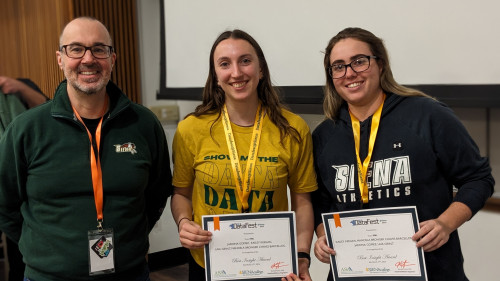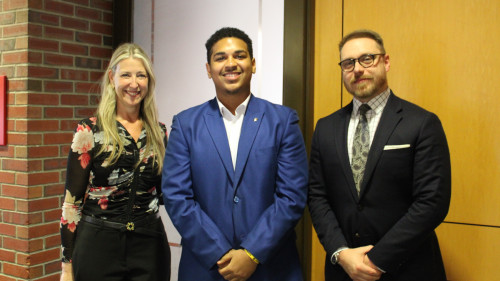
Nearly 100 years ago, a scientist trapped a mouse in a stream in Ethiopia. Of all the rodents in Africa, it stood out as the one most adapted for living in water, with water-resistant fur, broad feet, and long whiskers that could spread out over the water to hunt insects. It is thought to be extinct.
Tom Giarla, Ph.D., assistant professor of biology, studies small tropical mammals, including DNA from this specimen, which is now housed at the Field Museum in Chicago. He is the lead author of a new study in the Zoological Journal of the Linnean Society, which has verified this semi-aquatic mouse’s closest cousins, including two species new to science.
He noted that the research was made possible by a large international network of scientists.
“We have people from all over the world working on this research - field workers, geneticists, morphologists,” said Giarla. “Science is a global effort.”
News about his research has been picked up by Smithsonian, New Scientist, The Independent and Gizmodo.
The two groups of mice have been confused with one another for a century. They are very elusive, and some of the rarest animals in the world, and Giarla and his fellow researchers have now been able to draw the rodents’ family tree.
“It’s underappreciated how little is known about the biodiversity of small mammals, especially in tropical parts of the world. We’re not discovering a whole lot of new lions, tigers, and bears, but there's an incredible potential for discovery of new species of small mammals because they’re tough to find,” said Giarla. “And they’re sort of underappreciated animals—they’re really cool when you start to learn about their ecology. These are semi-aquatic mice, so they’re not just your average, everyday rodents.”
There are two main kinds of mice that the researchers focused on: Nilopegamys and Colomys. While Nilopegamys has only been found in Ethiopia, Colomys have been found throughout the Congo Basin and into the western part of the African continent.
Colomys’s name roughly translates to “stilt mouse” for its elongated feet that let it wade in shallow streams to hunt for water-dwelling insects.
For this study, Giarla and his colleagues conducted the first evaluation of Colomys throughout its broad range, drawing from new field work and museum collections. They compared the animals’ physical traits and analyzed their DNA. According to the Field Museum, the analyses revealed that within the Colomys genus, there were two new species that had not yet been described.
“When you're working with ‘ancient DNA’ or ‘antique DNA,’ you have to treat it differently. There can't be any contaminating DNA present, because that could ruin your whole study,” he said. “I was stunned that I actually got it to work on my first try.”
Giarla explained that the findings could help inform public health efforts and conservation.
“COVID is a zoonotic disease, and biodiversity research is essential to understanding zoonotic disease,” says Giarla. “We need to understand what species are present in natural areas, especially natural areas being changed by humans through mining and deforestation.”
Frank Mosher ’18 worked with Giarla on the Colomys goslingi study as an undergrad. He is now a lead biotech production specialist at Regeneron in East Greenbush, NY. They assessed the relationship of C. goslingi individuals via tissue samples to determine a phylogeographic relationship between populations. Emily Roff ’18 was also part of the research; they both received co-author credit on the Giarla’s article. Mosher presented his research on the topic at a national academic conference, while Roff used hers as the subject of her honors thesis.
“Working with Dr. Giarla on this project helped me fall in love with biology, and nothing prepares you for a job quite like loving the inner workings behind things,” said Mosher. “Science is in everything, and loving it helps you appreciate the beauty of the world around you.”
Giarla said several current and former Siena students helped with his work, and are acknowledged in the paper: "For help with laboratory work, database management and data processing, we are grateful to many Siena College students over the past five years, including Daniel Biljanoski, Naisla Defran, Mathew Dolinar, Francesca Gallo, Ashley Herkert, Nimra Komal, Samerna Masih, Margot Pavlik and Maria Valdez."

